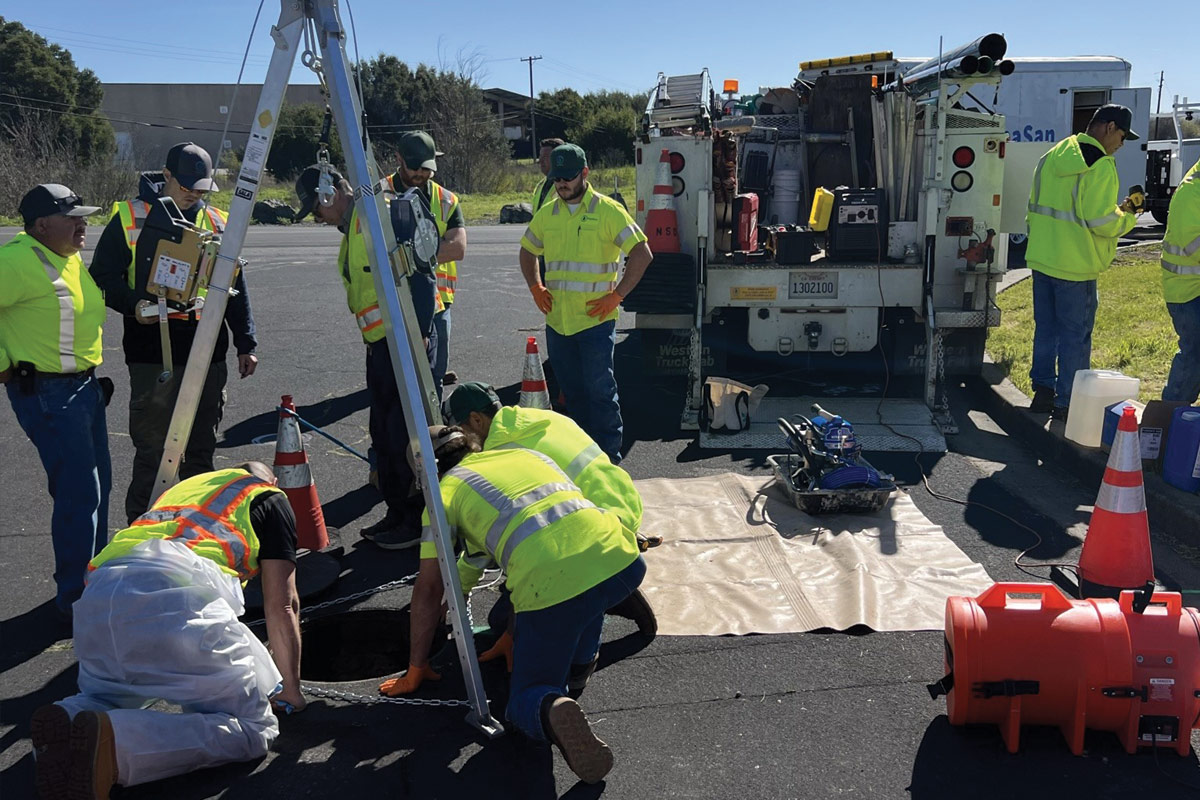
Polymer Injection Grouting Saves Indiana Town Time, Money and Headaches
The Town of Clarksville, Ind., noticed abnormally high flow rates at a pump station and its WWTP. The longer pump operation hours and a higher volume of water needing to be pumped and treated was leading to high costs and concerns over the capacity of their current equipment.
After identifying inflow and infiltration (I&I), Ground Works Solutions (GWS) was brought in to address the problem using a polymer injection process.
The Town of Clarksville was the first settlement north of the Ohio River in the United States. Like many towns its age, it has to maintain a blend of new and aging infrastructure to support its population growth and demands of a booming commercial retail industry.
RELATED: Trenchless Rehab Solution Lifts Box Culvert in Pensacola, Florida
In 2007 — around the time that new commercial development that had come online — Clarksville began to notice high levels of water flow at its Pump Station 10 (PS10) that was causing its wastewater treatment plant (WWTP) to strain under the new flow levels. To fix the issue, a commissioned engineer determined the Town had a capacity problem and recommended constructing a new pump station. Due to low rates and budget limitations, the town decided to wait-and-see before undertaking this project.
Unfortunately, the problems continued. During high rain events, some pump stations were experiencing a 500 percent increase in flows and the WWTP was experiencing a 300 percent increase in flows. In 2011, due to an effluent line failure that resulted in a release into the Ohio River, the Town entered into an Agreed Order with the Indiana Department of Environmental Management. In 2014, a new development announcement compelled the town to aggressively repair the issue, for fear of not being able to sign future capacity letters.
To better determine the problem’s cause, Clarksville contracted with Gripp Inc. to conduct flow monitoring at PS10 and to work its way upstream. The monitoring tracked the issues back to a gravity outlet at Pump Station 33 (PS33) and not PS10. CCTV inspection determined that the pipe was overall in good shape, but the joints and manholes were leaking like a sieve.
SELECTING A SOLUTION
The PS33 service area was going to be a challenge to repair. PS33 was built to serve development along US HWY 31 and manholes were located in a swampy area next to I-65. When rainfall would occur, the area would become highly saturated due to the highway and commercial drainage. Additionally, the site had limited access as it was located behind commercial buildings with limited rear parking.
Initially, Clarksville evaluated lining, moving the line, and Cured in Place Pipe (CIPP). When evaluating these solutions, the primary issues became costs, access issues and a lack of a guarantee.
While repair solutions were being evaluated, the Town’s engineering consultant HDR Inc., determined that GWS’ polymer injection application might be a viable solution.

Of the seven manholes to be rehabilitated, GWS determined that only four of them required complete encapsulation. For the encapsulation, the injections would occur around the manhole to ensure full coverage of the polyurethane and provide a complete seal. In the other three manholes, the pipe joints were the focus and the major infiltration points referred to as “gushers.”
Regarding site access, GWS was able to park in the rear of the businesses and run hoses out to each location. The injections took place inside the manhole with the crew member rigged to a winch and safety harness. Amazingly, the repairs of all seven manholes took just one and a half days to complete. The results were:
• High-pressure leaks stopped in minutes
• Sealed the leaks in both the manholes, lateral connections and the precast joints
• No bypass pumping was required
• Project was performed under budget as GWS only charged for the pounds of polymer actually injected

The analysis showed that the difference between weeks 31-45 of 2014 and 2015, was a reduction of 26.91 pumping hours per week which was an equivalent of 2.34 million gallons. Over the course of a month, the amount reduced equaled approximately 10 million gallons, enough water to fill more than 15 Olympic-sized swimming pools.
The pump and treatment cost reduction equaled to $94,315 per month in sanitation costs, an annual savings of $1.1 million, and a reduction of over 120 million gallons of water needing to be treated per year.
Additional savings came in the form of mitigating the need for a new pump station, saving the Town $750,000 (not including land costs, which averaged about $1 million per acre.)
The cost of the project in total was $74,737 to complete (see the breakdown in Table 1.) With the monthly savings achieved, the project’s return on investment was less than a month, and the Town of Clarksville was able to avoid some big-ticket construction costs.
The Clarksville I&I Rehabilitation Project saved the Town of Clarksville a great deal of time, money and headaches. The Town was able to reduce its cost and regulatory burdens by implementing innovative applications to ensure its system was capable of handling future economic and population growth. With data and engineering, the Town strategically identified an unknown problem location and was able to overcome project accessibility and cost issues by thinking outside of the box.
Robert Armstead is marketing director at Ground Works Solutions.




